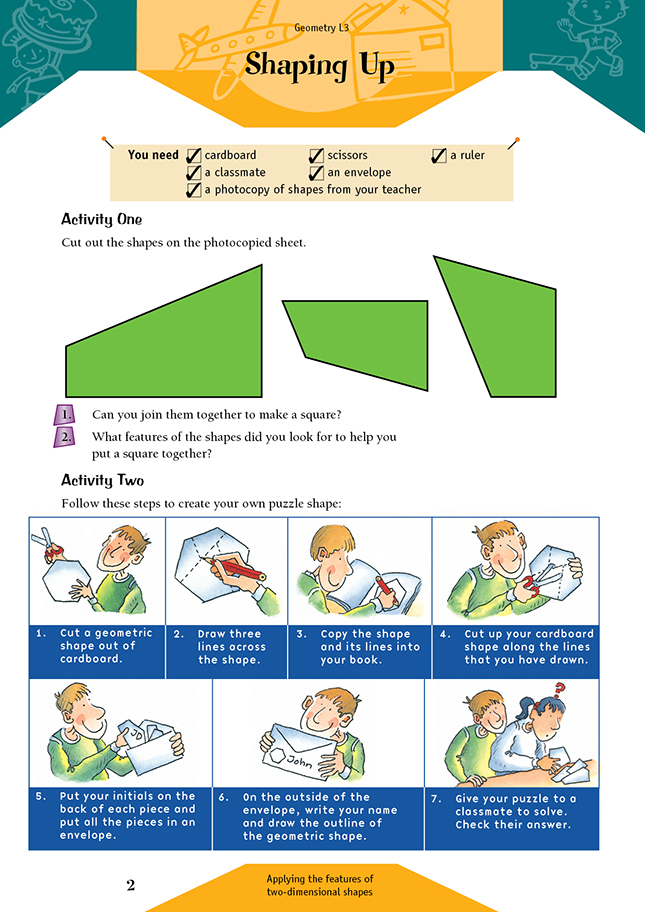This is a Level 3 Geometry activity from the Figure It Out Series.
A PDF of the student activity is included.
Click on the image to enlarge it. Click again to close. Download PDF (97 KB)
- Apply the features of two dimensional shapes to solve puzzles.
- Copymaster of puzzle
- Cardboard
- Scissors, ruler
- FIO, Level 3, Geometry, Shaping Up, page 1
- Envelope
For both activities, students need to visualise the shape they are trying to make. You could help students by relating the shapes to their use in the environment, for example, a stop sign (octagon), a hazard sign (rhombus), and a road patrol sign (circle).
Activity One
For this activity, students need to consider these features of a square: four equal sides and four right angles. (The comments for page 1 provide further details on the right angle.) Ask students, “Where are the right angles in a square?”
Activity Two
This activity is useful for introducing polygons. Poly means many and gon means angles. If a polygon is regular, all its angles are equal and all sides are equal.
Polygons that students might use include:
- pentagon Penta is the Greek word for five. (A pentathlon is an athletic competition that has five events.)
- hexagon Hex means six.
- heptagon Hepta means seven.
- octagon Octa means eight.
- nonagon Nona means nine.
- decagon Deca means ten.
.gif)
Polygons with sides and angles that are not equal are called irregular polygons.
Answers to Activities
Activity One
.gif)
- Answers will vary. A useful start is identifying the right angles on each piece to make the corners. Students might also look at the length of the sides or the size of the angles.
Activity Two
Practical activity


